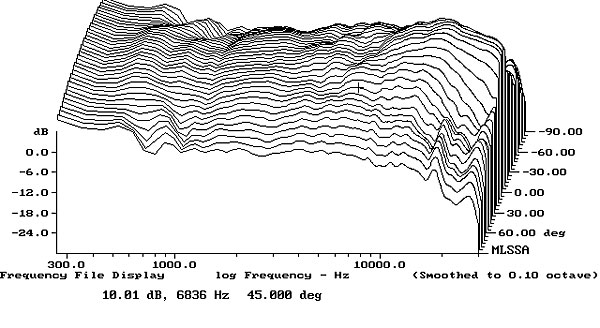With a mono test with the speaker placed in the middle, the side wall specular reflections are at a lower level. So this takes the room a bit more of out of the play compared to having speakers closer to side walls with no side wall treatment.
Optimal position for each speaker can makes sense. As a speaker designer you have to tune the low frequency with a certain type of room gain and how a designer does this can vary. Some may tune it with a corner gain of 9 dB in, some with 6 dB, etc. And with a cardioid or a dipole, the best position generally are different compared to a monopole.
Multichannel is a step away from accuracy due to much more comb filtering and lobing. While one cannot hear discrete reflections in the same matter with many channels, everything is sort of a mess. Another approach to achieve spaciousness without this and maintain accuracy is using a high level of lateral later arriving diffuse energy. Something Harman never included in ther researchers to my knowledge but others have and it's often used in the studio world.
Personally I don't fancy multichannel for music and much prefer a late arriving diffuse tail. However, as a speaker designer it would financially be much better to sell more speakers to people.
Optimal position for each speaker can makes sense. As a speaker designer you have to tune the low frequency with a certain type of room gain and how a designer does this can vary. Some may tune it with a corner gain of 9 dB in, some with 6 dB, etc. And with a cardioid or a dipole, the best position generally are different compared to a monopole.
Multichannel is a step away from accuracy due to much more comb filtering and lobing. While one cannot hear discrete reflections in the same matter with many channels, everything is sort of a mess. Another approach to achieve spaciousness without this and maintain accuracy is using a high level of lateral later arriving diffuse energy. Something Harman never included in ther researchers to my knowledge but others have and it's often used in the studio world.
Personally I don't fancy multichannel for music and much prefer a late arriving diffuse tail. However, as a speaker designer it would financially be much better to sell more speakers to people.

